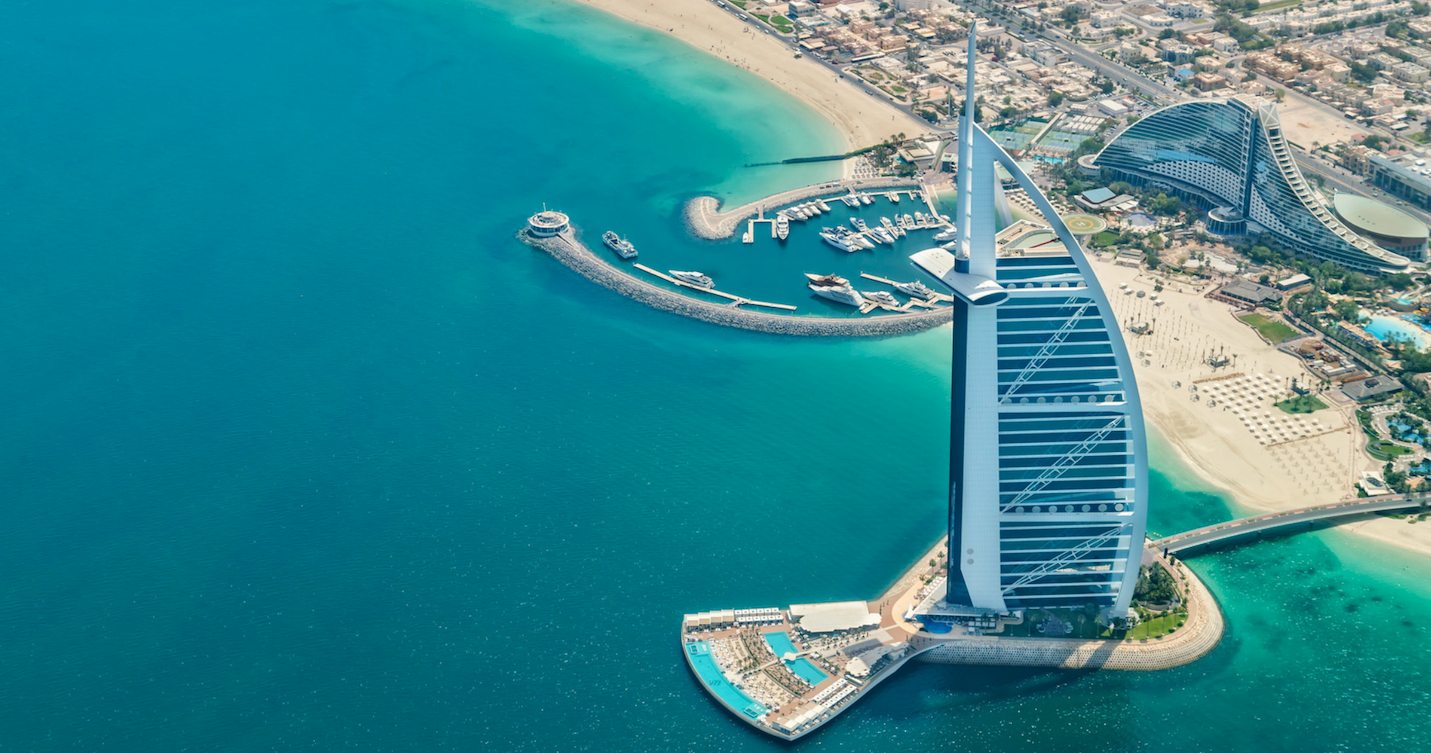The UAE is undoubtedly one of the most attractive markets in the Middle East for food and beverage exporters, housing one of the largest F&B industries in the region, falling just behind regional leader Saudi Arabia. Looking at the numbers, industry expenditure is expected to reach an impressive US$44.5 billion in 2023! And the demand for imported food is almost unmatched, with over 90% of the country’s food being imported. While this makes for a highly competitive market, it’s also a highly rewarding one for the right brand and the right product.
1. Consumers Travelling Through Cuisine
As such a globalised economy with expats from all corners of the globe, UAE consumers are always keen to try new cuisines and are developing a growing appetite for new international flavours and foods. And as COVID-19 dampened travel possibilities for the last two years, international foods became even more popular as a means of experiencing new cultures without leaving the country. Asian foods are especially common, with consumers frequenting Chinese, Japanese and Thai restaurants.
2. Premium Foods Remain a Favourite
By global standards, the UAE is one of the wealthiest countries, with an estimated GDP per capita of US$41,800 by the end of 2022. Part of this high income can be attributed to the UAE’s strong, wealthy Western expat population. This high income and Westernised consumer base translates into high demand for imported, premium foods. Australian foods already have a reputation for quality in the UAE, especially in the high-value processed foods area, and growth is expected to pick up further as disposable incomes rise further. A young and experiential consumer base is also fuelling demand for new specialty foods and niche products, further contributing to premiumisation.
3. Convenience Is Highly Valued
The UAE is highly urbanised–in fact, 86% of residents live in cities! This high urbanisation rate, coupled with the return to normality post-COVID-19 lockdown, means consumers lead increasingly hectic and busy urban lifestyles. So it’s no surprise that the demand for convenience is surging, especially in the food and beverage space. This is seeing options like pre-prepared ready meals and frozen foods rise in popularity, with strong growth predicted over the next five years driven by both an increase in demand as well as innovations from manufacturers in creating more nutritionally-balanced frozen foods and investments in cold chain logistics.
4. The Popularity of the Non-Alcoholic Beverage
As a predominantly Muslim country, alcohol sales are limited to certain retail and foodservice venues in the UAE. So, consumers turn to non-alcoholic beverages instead, and at growing rates, with the sector having registered double-digit growth in the last two years. In recent years, the popularity of non-alcoholic bars like The Virgin Mary Bar, in particular, has been a trend to watch in the foodservice industry, and is driving consumption especially at the more premium end of the market, supporting demand for higher-quality alcohol-free beverages. In particular, consumers are seeking out beverages that can replicate the flavour and experience of alcoholic drinks.
5. Organic, Health and Plant-Based Trends Continue Accelerating
With the presence of an expat population, Western food trends have spread in the UAE. One such trend is the accelerating demand for healthy, functional and organic foods and beverages, which has been significantly boosted by the pandemic, forcing consumers to re-evaluate their unhealthy lifestyle choices and focus more on health and wellness. This has become especially important given the UAE’s high obesity rates, at over 30% of the population. In particular, products such as organic juices, low-calorie options and alternative milks are seeing jumps in sales. There’s a bright spotlight on organic food especially, which has become the fastest growing market in the UAE, and with the UAE’s dependence on organic imports due to its arid climate, this presents a unique opportunity for Australian exporters in the space.
It’s not just health concerns driving these trends, but also sustainability concerns. While sustainability is still largely a simple buzzword, UAE consumers are becoming more attentive when it comes to considering the sustainability and provenance of their food. This is manifesting in behaviours such as reducing meat consumption or adopting a more flexitarian diet. In fact, 35% of consumers now use sustainability as a key purchasing factor when selecting a brand. Foodservice outlets are already responding, with a growing number adding vegetarian and vegan options to their menus. So are retailers, with supermarkets expanding their range of plant-based and sustainably-sourced foods, as well as plastic-free products as consumer awareness of plastic pollution rises.
6. Superfoods and Gut Health Focused Foods Supported By Wellness Trends
Beyond more general health concerns, there are a few ingredients in particular that are capturing consumer attention. For instance, the benefits of ‘superfoods’ like goji berries, kale and chia seeds is increasing as consumers actively seek out these foods as sources of vitamins, minerals and antioxidants. The emphasis is certainly on natural foods, whether that’s pure honey, wild salmon or fresh fruits and vegetables, all of which have their own unique health benefits. In the packaged food space, this trend is seeing ingredient lists get shorter and shorter. Another space to watch is foods promoting good gut health from yoghurt to kimchi, as digestive health and probiotics become key buzzwords.
7. Sports Nutrition on the Rise
As we’ve seen, the pandemic highlighted the importance of healthy eating amongst the Emirati population. But, hand in hand with this trend is the focus on living an active lifestyle. As such, the demand for sports nutrition products has strongly been growing, even pre-pandemic. Key areas of focus here include products such as protein powders, protein bars, ready-to-drink products, weight management products and health supplements. This demand isn’t solely a result of increased health-consciousness, but also a reflection of the influence of Western culture and body ideals on the market. One consequence of this trend is the rising growth of health food stores such as Holland & Barrett, which stock sports nutrition products alongside a wide variety of vitamins and dietary supplements, which have also seen explosive growth over the past two years.
8. Snack Products as a Key Growth Area
Snacking is incredibly common in the UAE, with around half of the population regularly snacking between meals. This trend, coupled with the increasingly busy lives of consumers, is seeing increased movement within the on-the-go snacking space. In particular, nuts are a key area to watch, experiencing strong growth as consumers seek both convenient and nutritious snacks between meals. Snack bars, incorporating natural ingredients such as whole grains, fruits and nuts, are also becoming more popular as the health snack market increases in size. As the tourism industry emerges from the pandemic, demand for snacks is only expected to rise, with convenient formats becoming even more popular, creating opportunities for Australian exporters.
9. A Thriving High-End Restaurant Scene
The UAE’s foodservice scene is certainly one to watch! This is all thanks to the economy’s bustling tourism sector, which drives demand for cafes, bars and restaurants. But local consumers are also enjoying dining out, with many restaurants fully booked from Monday through to Sunday. In fact, the UAE has one of the highest densities of restaurants per capita in the world! The luxury dining market is of particular interest, driving greater demand for full-service restaurants which offer both authentic Emirati cuisine as well as various global flavours to cater to the extraordinarily broad mix of expat residents, from Syrian at Orfali Bros Bistro to Japanese at Nobu. When combined, the revenue of full-service restaurants in the country exceeds US$2.3 billion, cementing the UAE’s status as one of the world’s high-end culinary capitals. Despite COVID-19 significantly dampening industry sales and recovery not expected until 2025, as tourism flows return, the landscape will look increasingly positive!
Wrap-Up
And that sums up our look at some of the top trends driving the UAE’s food and beverage sector. The UAE is a home to a countless number of different cultures, which is reflected in their demand for unique international foods. The high-income and Westernised population base translates into a demand for premium, imported and specialty foods while the country’s bustling urban environment supports demand for convenience foods and nutritious snacks. Alcohol-free beverages are a category to watch, and with one of the highest obesity rates in the world, so too are organic, plant-based and health foods as consumers seek to prioritise their health. So for Australian exporters looking to the UAE, these trends are certainly important to note, especially for brands in the premium, health and wellness spaces!
We hope you’ve found these insights on the UAE market helpful. As always, if you’ve got any questions or want to discuss export opportunities for your company, feel free to drop us a line at Export Connect – we’d love to hear from you.




